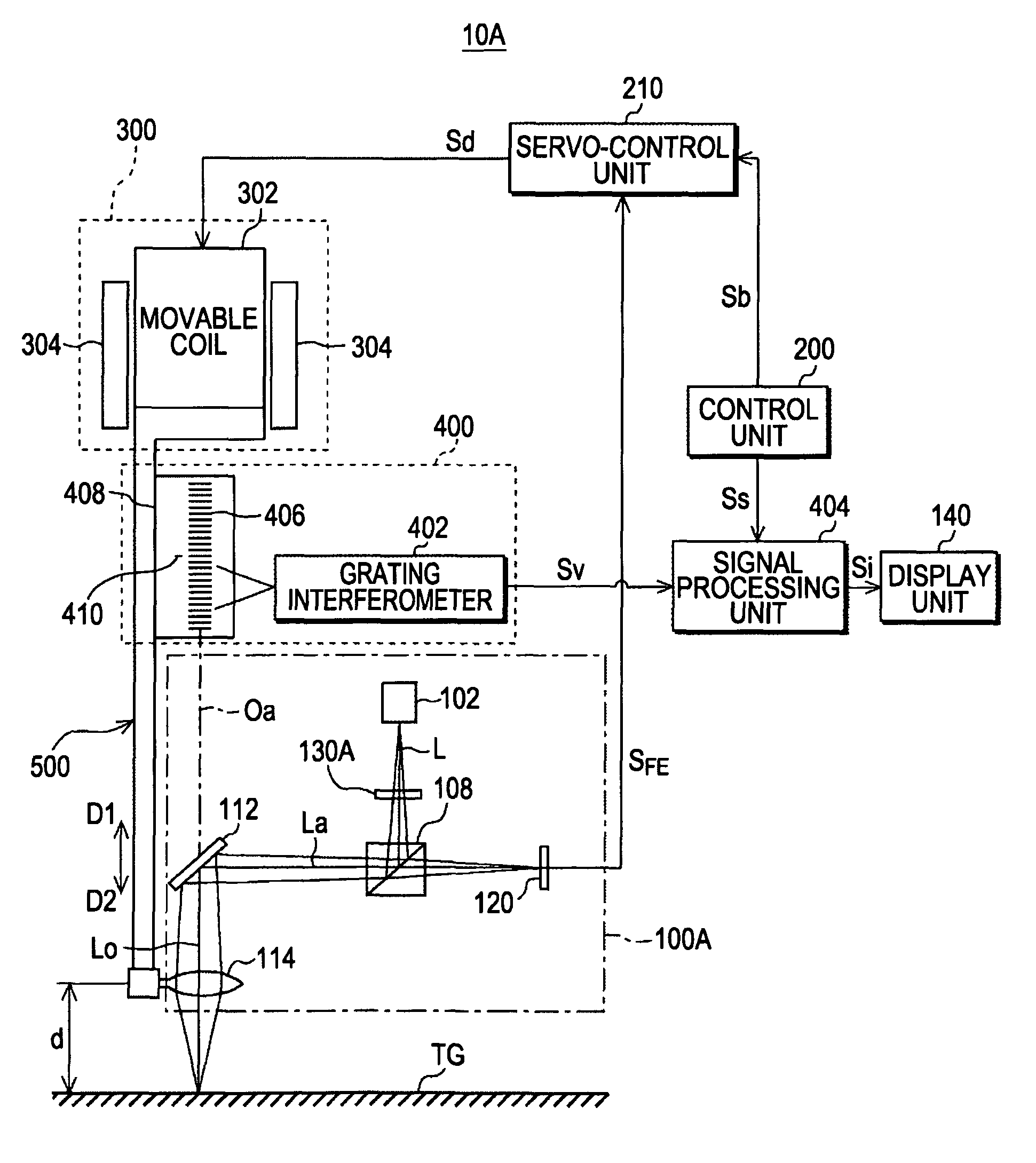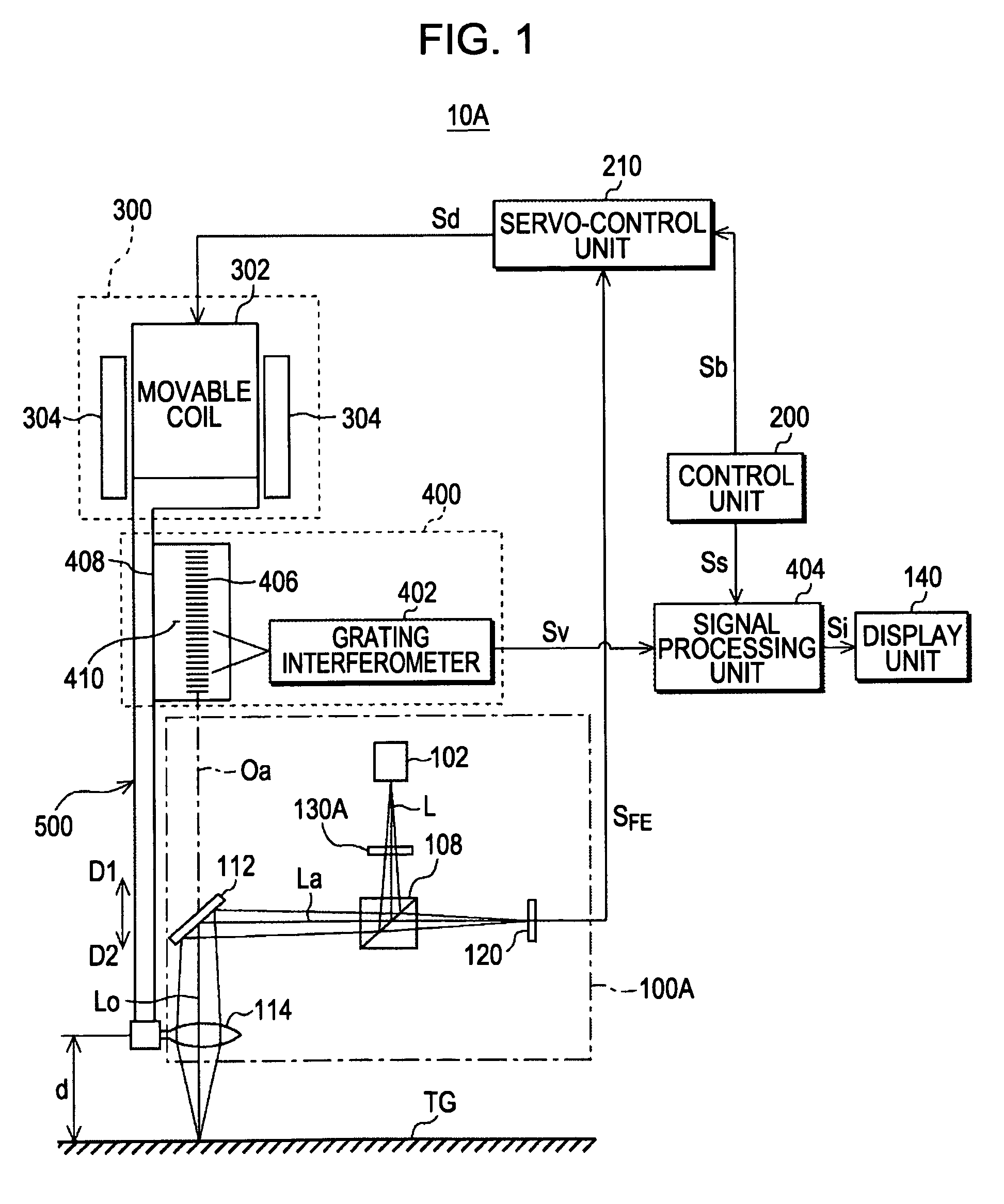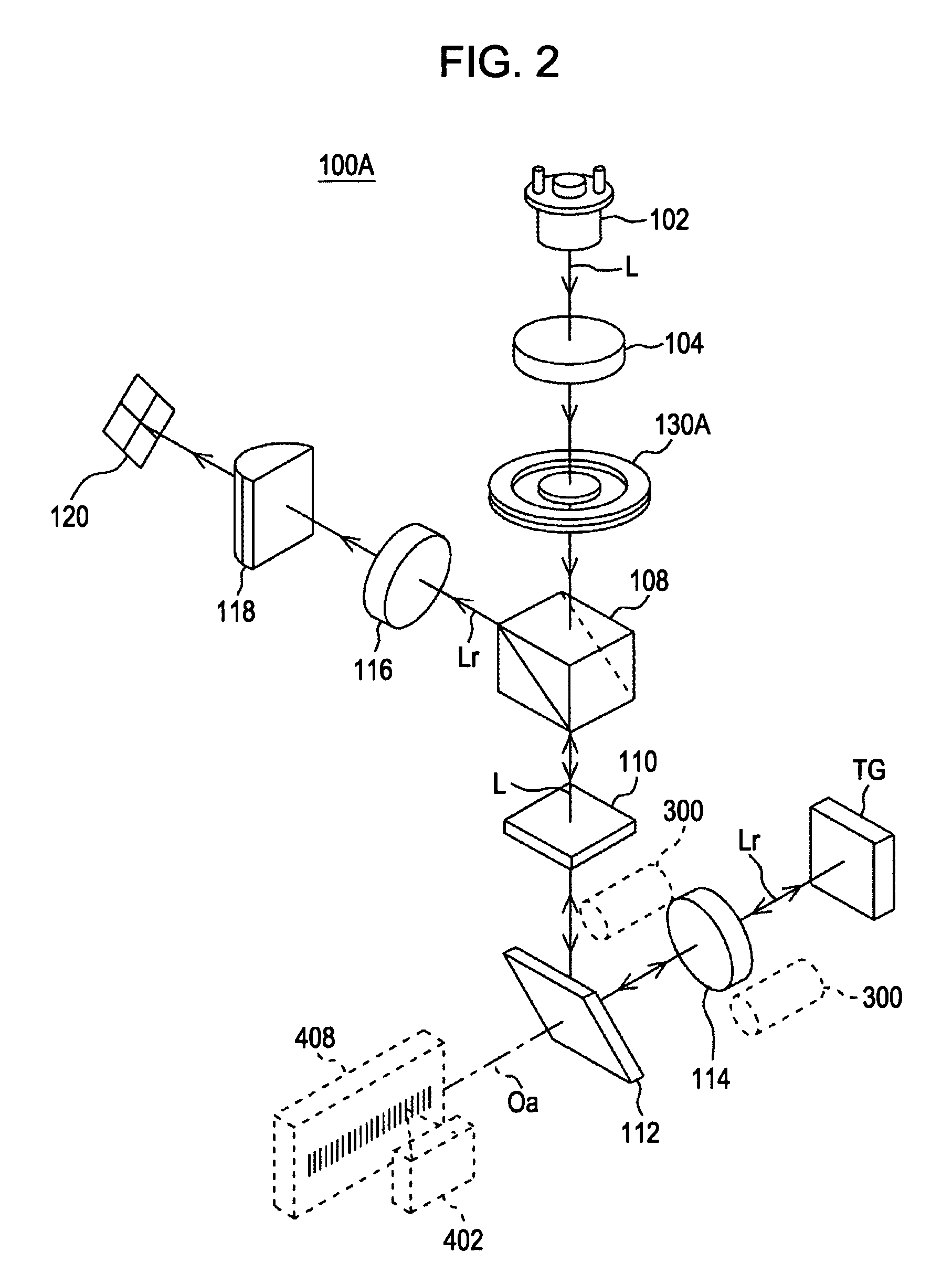Non-contact displacement detecting device using optical astigmatism
a non-contact, detection device technology, applied in the direction of optical elements, discharge tubes/lamp details, instruments, etc., can solve the problems of inability to detect foreign particles, measurement errors, and projections and recesses formed on the measurement surface, so as to reduce the resolution, reduce the resolving power of the non-contact sensor, and improve the effect of accuracy
- Summary
- Abstract
- Description
- Claims
- Application Information
AI Technical Summary
Benefits of technology
Problems solved by technology
Method used
Image
Examples
first embodiment
[0031]A first embodiment of the present invention will be described below with reference to the drawings.
[0032]FIG. 1 is a block diagram of a displacement detecting device 100A according to the first embodiment of the present invention. As shown in FIG. 1, the displacement detecting device 100A includes a non-contact sensor 100A, a control unit 200, a servo-control unit 210, an actuator 300, a displacement-amount measuring unit 400, a signal processing unit 404, and a display unit 140. For the sake of convenience, the configuration of the non-contact sensor 100A is shown in a simplified form in FIG. 1.
[0033]FIG. 2 is a perspective view showing the configuration of the non-contact sensor 100A. As shown in FIG. 2, the non-contact sensor 100A includes a light source 102, a collimator lens 104, a light adjustment member 130A, a polarizing beam splitter 108, a quarter-wave plate 110, a mirror 112, a first objective lens 114, a second objective lens 116, an astigmatism generating lens 118...
second embodiment
[0066]A second embodiment of the present invention is equipped with a light adjustment member 130B having a configuration different from that of the aforementioned light adjustment member 130A. FIG. 8A is a plan view showing the configuration of the light adjustment member 130B. FIG. 8B is a cross-sectional view taken along line VIIIB-VIIIB in FIG. 8A. FIG. 8C illustrates a functional example of the light adjustment member 130B.
[0067]As shown in FIGS. 8A and 8B, the light adjustment member 130B is formed of a flat plate having a circular shape in plan view and composed of, for example, a metallic material or a glass material. The light adjustment member 130B has a main light-adjustment-member body 138b, a light blocking section 136b that blocks a paraxial ray of the output light L, and an aperture section 132b that transmits the output light L toward the measurement surface TG.
[0068]The light blocking section 136b is provided in the middle of the main light-adjustment-member body 13...
third embodiment
[0071]A third embodiment of the present invention will be described below with reference to the drawings. A light adjustment member 130C in this embodiment differs from those in the first and second embodiments in that it functions as a member that prevents entry of diffracted light from an object to be measured. Components that are similar to those in the displacement detecting device 100A and the non-contact sensor 100A described in the first embodiment are given the same reference numerals, and the detailed description thereof will be omitted here.
[0072]FIG. 9 is a perspective view showing the configuration of a non-contact sensor 100B. As shown in FIG. 9, the non-contact sensor 100B includes the light source 102, the collimator lens 104, the light adjustment member 130C, the polarizing beam splitter 108, the quarter-wave plate 110, the mirror 112, the first objective lens 114, the second objective lens 116, the astigmatism generating lens 118, and the light receiving element 120...
PUM
| Property | Measurement | Unit |
|---|---|---|
| diameter | aaaaa | aaaaa |
| focal length | aaaaa | aaaaa |
| incident angle | aaaaa | aaaaa |
Abstract
Description
Claims
Application Information
 Login to View More
Login to View More - R&D
- Intellectual Property
- Life Sciences
- Materials
- Tech Scout
- Unparalleled Data Quality
- Higher Quality Content
- 60% Fewer Hallucinations
Browse by: Latest US Patents, China's latest patents, Technical Efficacy Thesaurus, Application Domain, Technology Topic, Popular Technical Reports.
© 2025 PatSnap. All rights reserved.Legal|Privacy policy|Modern Slavery Act Transparency Statement|Sitemap|About US| Contact US: help@patsnap.com



